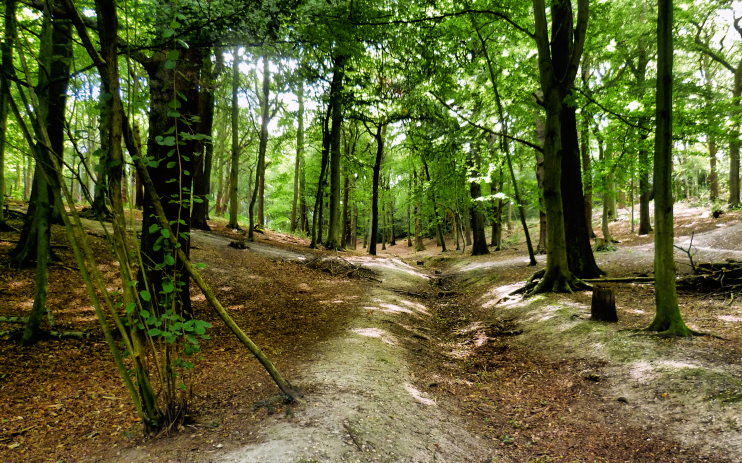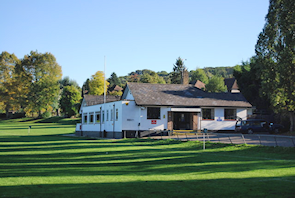Croham
Croham, Croydon
A former manor and now an electoral ward covering most of South Croydon

Croham’s name was first recorded in 1225 as Craweham, ‘a homestead or enclosure frequented by crows’.
Croham Hurst is a 477-foot hill with evidence of intensive prehistoric use, including a (now barely perceptible) burial mound that dates from around 2000bc. The absence of subsequent relics indicates that the infertile hilltop was abandoned when settlers moved to the valley to cultivate crops. The photograph above* shows the view from the path leading up from Croham Valley Road as it enters the main woodland and heads up to the summit plateau.
The manor of Croham was one of four in the parish of Sanderstead and was acquired in the late 16th century by Archbishop Whitgift. It later became the property of the schools that the archbishop founded in Croydon.

In 1898 the governors of the Whitgift Foundation planned to sell the lower slopes for development, while offering the hilltop to the council.
Following public protests the foundation sold the whole of Croham Hurst to Croydon corporation, while playing fields for Old Whitgiftians were laid out on Croham Farm.
Croham Hurst school was founded in 1899 for day girls and boarders, and moved to Croham Road in 1907. The school closed in 2008, when it was absorbed by Croydon’s Old Palace School.
Croham Hurst golf club was established in the 1920s and suburban housing was built beyond the protected slopes, notably in the form of Richard Costain and Sons’ Croham Heights estate in 1927.
The Croham ward has a higher proportion of well-educated, young, single people than most parts of the borough.
The comedian and television presenter Sue Perkins was educated at Croham Hurst school.
Postcode area: South Croydon CR2
Population: 15,790 (2011 census)
Further reading: Brian J Salter (ed.), Selsdon and Croham, Living History, 1983
and Monica Sharpe, Croham Hurst School, Phillimore, 1998
